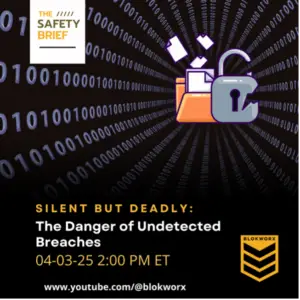Imagine someone sneaking into your house and living in your attic for over six months. They’re not making noise or setting off any alarms—they’re just watching, learning, and waiting for the perfect time to strike. Creepy, right?
That’s exactly how many modern cyberattacks unfold. The longer the attacker goes unnoticed, the more damage they can do. And unfortunately, the numbers show that many businesses are completely unaware until it’s far too late.
The Shocking Truth About Dwell Time
The time between when a cybercriminal first gains access to your network and when they’re finally discovered is called dwell time. According to IBM’s 2023 Cost of a Data Breach Report, the average time to identify a data breach was 204 days—nearly seven months. And once detected, it took an additional 73 days to contain the breach, bringing the average lifecycle of a breach to 277 days (IBM, 2023).
Think about what an attacker can accomplish in that amount of time. They aren’t just sitting still—they’re:
- Collecting sensitive data
- Mapping your systems and user behavior
- Installing backdoors for future access
- Preparing for a ransomware detonation
- Selling access to your network on the dark web
The longer the breach goes undetected, the more expensive it becomes. In fact, breaches that took longer than 200 days to contain cost 23% more on average—$4.95 million versus $3.93 million for those caught and contained earlier (IBM, 2023).
Detection Is Not the First Line of Defense
Many organizations assume they’re protected because they have alerting systems, antivirus tools, or SIEM dashboards in place. But those systems are reactive. Detection tools only activate after something has already slipped past your defenses.
By that time, you’re not preventing an attack—you’re trying to clean up the damage.
Even the most advanced detection technologies rely on identifying known patterns, behaviors, or signatures. That makes them vulnerable to brand-new or well-masked threats that haven’t yet been cataloged. The result? Cybercriminals continue to sneak past perimeter defenses undetected.
That’s why the smarter move is adopting a prevention-first strategy—one that stops threats before they ever get a chance to run.
Use Case: The Attack That Was Quiet… Until It Wasn’t
Let’s say a midsize company gets hit with a simple phishing email. An employee clicks on a malicious link, and just like that, an attacker has a foothold.
Nothing happens immediately. There are no flashing alerts or broken systems. But over the next several months, the attacker:
- Maps the internal network
- Escalates privileges and explores connected systems
- Identifies valuable data—financial records, client contracts, IP
- Plants ransomware payloads
- Waits for the right moment to strike
And then, it happens: files are encrypted, systems go down, and a ransom note appears. But the breach didn’t start that day—it began months earlier, and the real damage had already been done.
Why Prevention-First Security Matters
At BLOKWORX, we don’t believe in waiting for trouble to announce itself. We believe in stopping threats before they have a chance to execute.
Our prevention-first cybersecurity approach includes:
✅ Zero Day Endpoint Protection
Powered by deep learning AI, this stops threats at the pre-execution stage. It doesn’t wait to recognize bad behavior—it prevents the threat from running altogether.
✅ Zero Day Email & SaaS Security
Malicious links and files are scrubbed before they land in a user’s inbox or cloud workspace, cutting off phishing attempts and payload delivery at the source.
✅ Always-On Monitoring
Our 24/7 US-Based SOC team is constantly watching, ready to respond in real time if any anomaly appears. And with proactive threat hunting, we’re not just watching logs—we’re anticipating moves.
Final Thoughts
Cybercriminals today are patient, calculated, and often invisible until it’s too late. The average 204-day detection window gives them a head start that most businesses can’t afford to give.
But you don’t have to wait and hope for the best. With prevention-first tools and strategies, you can reduce your risk, protect your assets, and operate with peace of mind.
Let’s stop threats before they start.
Schedule a complimentary discovery call to learn how BLOKWORX helps MSPs and their clients stay one step ahead—every single day.
References
IBM. (2023). Cost of a data breach report 2023. IBM Security. https://www.ibm.com/reports/data-breach




